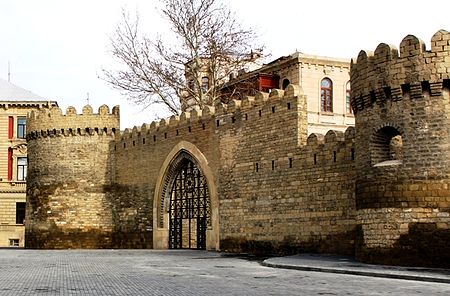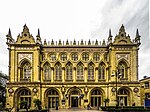Baku Fortress Wall

Baku Fortress (Azerbaijani: Bakı Qalası) is a medieval building in Baku, Azerbaijan, the largest of Absheron fortresses. The fortress consists of the Icheri Sheher and the walls and towers surrounding it and it was included by UNESCO into the World Cultural Heritage List in 2000. It was built in about 1138–1139 on the order of the Shirvanshah Manuchohr III (1120–1149).Based on traveler's illustrations and photos of the 19th century, the fortress consisted of a double wall. The first wall was built by the Shirvanshah III Manuchohr, and the second wall was built during the time of Shirvanshah Akhsitan I.However, the second fortress walls were destroyed during the reign of Russia in Azerbaijan. The first fortress wall still remains. Baku Fortress has two gates. One of them opened to the Caspian Sea and the other to land. The city walls, which had a height of 8–12 meters and a width of 3.5 meters, provided for Baku's security. In the Middle Ages, the fortress walls were 1500 meters long and now the walls are 500 meters long. In the northern part of the fortress, there is the main tower - quadrangular castle. This fortress is called "armory" in the nation's etiology. The peculiarity of the armory is that, despite being a defensive unit, builders have strengthened the wall by raising it in the center of the fortress wall, not in the center of the city.
Excerpt from the Wikipedia article Baku Fortress Wall (License: CC BY-SA 3.0, Authors, Images).Baku Fortress Wall
Boyuk Gala, Baku
Geographical coordinates (GPS) Address Nearby Places Show on map
Geographical coordinates (GPS)
| Latitude | Longitude |
|---|---|
| N 40.3676 ° | E 49.8332 ° |
Address
İçəri şəhər
Boyuk Gala
1095 Baku
Baku Ekonomic Zone, Azerbaijan
Open on Google Maps










